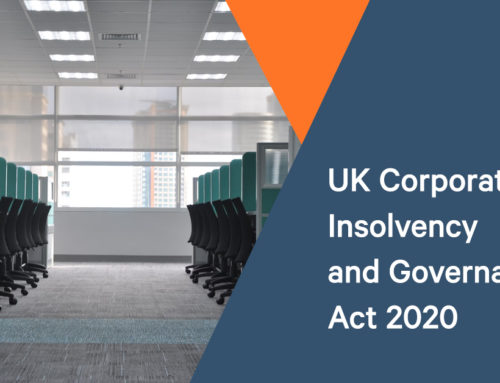The voluntary winding up of a company that is solvent can be accomplished under the Insolvency and Bankruptcy Code, 2016. Under the Insolvency Act 1986 is the Insolvency Rules 2016 that apply in England and Wales which sets out the procedure for the voluntary winding up of a company.
The Insolvency and Bankruptcy Code (IBC) 2016, which also covers individual bankruptcy, incorporates the Insolvency Act 1986 rules as well as the latest legislation that have modernised the liquidation process.
What is the IBC?
The IBC was brought in via an Act of Parliament and is designed to resolve claims and shorten the process of liquidating insolvent companies. The aim of the code is to make the process easier to understand, deal with the bad loan problems, as well as protect the interests of the small investor in a company. Other key areas under IBC include:
● The relationship between the debtor and creditor has changed
● The process is now time-bound in resolving insolvency – upon default of an agreed repayment, the creditor can take control of the debtor’s assets but must also make decisions to resolve the insolvency situation
● The debtor and the creditor can commence recovery proceedings against each other
● The insolvency process must be completed within 180 days for larger companies, which can be extended if the creditors do not object. For smaller businesses and start-ups, the process must be completed within 90 days; this can also be extended by 45 days if creditors are in agreement. If there is no resolution within this period, the company is liquidated.
The process to the voluntary winding up of a company under IBC
When the directors of a company wish to close a solvent company, it can be done under IBC but it must still be conducted by a licensed insolvency practitioner (IP). The aim is still to cease trading, distribute the company’s assets and settle any outstanding debts. The process is similar to that of other winding up procedures and is as follows:
1. The directors agree to wind up the company. They draw up a Declaration of Solvency, an affidavit, that confirms:
a. There has been no default on debt repayments;
b. The company is solvent and is able to settle all its debts in full from the proceeds of the sale of the assets during voluntary liquidation; and
c. The company is not being liquidated in order to defraud anyone.
Within the declaration, every debt must be listed. There must also be audited financial statements, details of business operations over the past two years, or less if the company was incorporated for only a short period of time, and an asset valuation report that has been completed by a registered valuer; if there are any assets.
2. An IP must be appointed by the board of directors to act as liquidator and manage the process.
3. A board meeting is called at which the directors make a decision on:
a. Approving the voluntary winding up of the company;
b. The appointment of an IP as liquidator; and
c. Arrange a date and time for a general meeting and to issue notice of the intention to wind up the company, including the proposed resolution and an explanatory statement.
4. A meeting with the shareholders must be held within 4 weeks of the Declaration of Solvency to pass these resolutions:
a. A special resolution to liquidate the company voluntarily or an ordinary resolution to liquidate the company because a fixed period in the company’s articles has expired;
b. A resolution appointing the IP as liquidator; and
c. A resolution by the creditors if they hold two-thirds or more of the debt within 7 days of the members’ resolution.
5. The resolutions are filed with Companies House by the liquidator. At this point, liquidation proceedings are considered to have commenced when the resolutions have been passed.
6. The liquidator takes control of the company and continues with the liquidation process including the realisation of any assets, settling outstanding debts and distributing any remaining monies to the company’s stakeholders.
7. The liquidator must make a public announcement about the voluntary winding up of the company within 5 days of taking control of the company, inviting any claims that must be submitted within 30 of the liquidation process starting. As well as being published in the relevant newspaper, it must also be on the company’s website.
8. The liquidator verifies any claims and either rejects them or accepts them.
9. They must also compile a list of stakeholders within 45 days of the last date for receipt of claims, based on proof of claims received with:
a. The amounts of claims submitted;
b. The extent of the debts, unsecured and secured;
c. The stakeholder details; and
d. Proofs of claims accepted or rejected, in part or as a whole.
10. The liquidator submits a preliminary report to the company 45 days from the date the liquidation process started stating:
a. The structure of the capital of the company;
b. Estimates of liabilities and assets from the start of the liquidation process, based on the books of the company;
c. The decision on whether any further inquiry is required into the conduct of the directors of the company and the way the business was conducted; and
d. The proposed plan of the liquidation process, the estimated costs and a timeline.
11. The liquidator opens a bank account in the company’s name and with the words ‘in voluntary liquidation’ into which the monies received from the sale of the assets is deposited to meet liquidation costs, settling debts and distributing remaining monies to the relevant stakeholders.
12. The liquidator requests a ‘No Objection’ letter from HMRC.
13. Monies from the sale of the company’s assets are distributed within 6 months, after the liquidation costs have been deducted and any outstanding debts have been paid.
14. The liquidator completes the process and closes the company within 12 months from the start of the process.
15. The liquidator completes a final report that is filed with the court and Companies House which includes:
a. A set of audited accounts relating to the liquidation;
b. A statement that details how the assets were realised, the debts that were paid and confirms that no litigation procedures are pending; and
c. A statement of the sale of the assets that details the asset’s value, how it was sold, whether an asset realised a profit and to whom it was sold.
16. The liquidator notifies Companies House and requests the company is dissolved and removed from the Register.
If your business is struggling with debt and you’re finding it difficult to see a way out of the problem, the first step is to seek professional advice. Our highly experienced professionals at Leading UK are on hand to help with advice on business rescue and restructuring operations, voluntary liquidation of solvent and insolvent companies, and compulsory liquidation.






